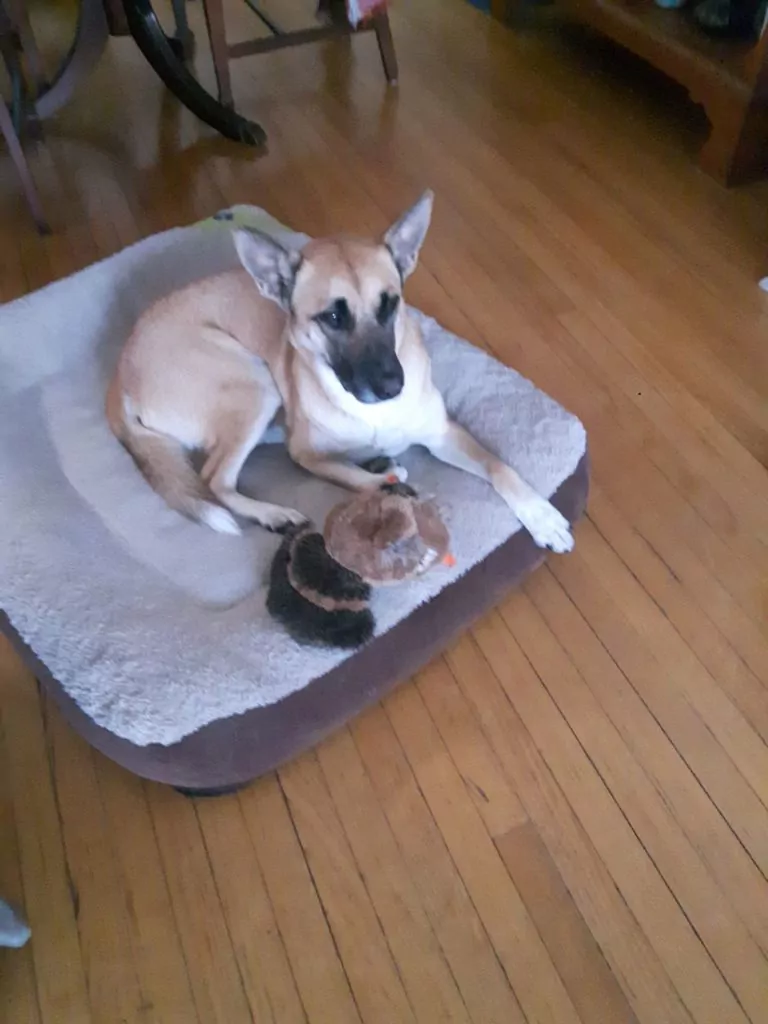
Trying to get work done with your dog bouncing off the walls?
On a work call with your dog looking out your window and policing the neighborhood?
Preparing your evening meal with your dog underfoot and your frustration growing?
Having dogs settled is a skill we want our dogs to have. Therefore, trainers often teach “go to your place,” training dogs to go to a designated spot and stay there.
At Way of Life™ Dog Training, we emphasize raising dogs as opposed to training or conditioning them into certain behaviors. We think of settling down as more attitude than skill and want our dogs to think about finding their way to the mat and learning to settle on their own.
The “Mat Time” Exercise
The “Mat Time” exercise is one of our signature exercises where instead of using rewards to train dogs to go to their place, we create an environment conducive to dogs doing this without being told. When dogs learn things on their own, they can generalize that learning to other settings and situations.
The Mat Time exercise teaches dogs to stay nearby by giving them a mat, bed, or blanket to be on, within the space we are working with, instead of them being underfoot or leaving our space. With time, the dogs learn to “park” themselves close by anytime we’re not actively paying attention to them or engaging with them.
Keep things simple when you’re first getting started with this exercise, especially if you have a new dog or are working to fix behavioral issues. The exercise is about introducing the dog to being in the house with us in a restricted space and in a controlled capacity.
- Choose an indoor space where you will practice this exercise—the office while you work, the kitchen while cooking, or the living room while reading. Start with a space where you’re active and busy—the kitchen or laundry room as opposed to a TV room or office where you’re likely to be stationary.
- Close off the space with gates or barriers. Ensure the space is cleared of anything you don’t want the dog getting into. Have your mat in the space, preferably out of your way, with chew toys and a few treats.
- Bring your dog into the space with a leash on, a long enough leash that you can grab or step on if you need to. Do not ask your dog to go the mat. Simply drop the leash, ignore the dog, and go about your business.
- Allow the dog to explore the space. If they try to leave, grab the leash, and bring them back in without saying much. If they jump on the kitchen counter, get them off gently without saying much or making a big deal.
- Absent attention or instruction from you, and with nothing better to do, the dog will realize that the best thing is sit or lie down on the mat. They will have learned this on their own without us asking, luring, or training.
Give this exercise some time and end it with the dog being somewhat settled in the space, whether on the mat or not. If the dog appears agitated and unable to settle, bring the dog closer to you, help settle them down with some food, and take them to their crate. Don’t attempt the Mat Time exercise when the dog might be too tired or too stimulated to settle.
Over time, you can build on this exercise by…
- Expanding to other spaces around the house.
- Taking it outside.
- Practicing without a mat to help guide the dog.
- Training with stimuli at a distance that we want the dog to ignore.
- Hiking and stopping for a break.
- Attempting the exercise without a leash.
- Practicing with stimuli at closer range.
In sum, the Mat Time exercise is another example of how we raise dogs to learn on their own, as opposed to through training and conditioning. By learning to find a comfortable spot in our orbit and on their own is not only a skill but a manifestation of the sound judgment we seek to instill in our dogs.